
|   |

|   |
 e-mail: leelakaverivenkat@gmail.com Evolution of Kathak in post independent India September 4, 2021 Referred to as the 'Maha Kumbha' of Kathak, Sangeet Natak Akademi's marathon fifteen day festival conducted under the auspices of the Kathak Kendra, featuring interviews with art scholars and celebrated artists alongside lec/dem sessions and performances, was one of its kind - even while some of the choices in selection and those left out of the reckoning, may have caused mixed feelings. This concept of the Kathak Kendra Director Suman Kumar, curated by Subhash Chandra, running in tandem with the celebration of seventy five years of India's Independence, was titled 'Vande Maataram', (Bankim Chandra Chatopadhyay's composition based on the rich iconography in the country, saluting 'Mother India'). While many participants expressed the appropriateness of the title at this point in our history, a few others voiced the opinion that something less 'political and declamatory' would have been better. Clarified in the timetable of events as "diverse expressions in Kathak", what finally emerged in the mixed event largely stressed individual journeys in Kathak, with fleeting moments, when thinking minds communicated the message that arts cannot live in cuckoo land, cut off from the concerns of a nation. Not for a moment taking away from the immense effort and organisation involved in conducting a festival of this nature, it was intriguing that in this age of the internet, online technology had not been harnessed more aggressively to feature exchanges with stalwarts like Pt Birju Maharaj (featuring his sons is not the same, and even Saswati Sen was called to share an evening as an afterthought) and Kumudini Lakhia - real game changers shaping not just Kathak aesthetics but also its content - with the traditional vocabulary put to use to create work on contemporary issues? Names like Uma Sharma, a prime disciple of Shambhu Maharaj and several accomplished solo dancers did not find a place. Conducting the interviews were the experienced television personalities Sadhana Shrivastav and Jainendra Singh. Of the comperes for the recitals, Bharati Dang was the best. 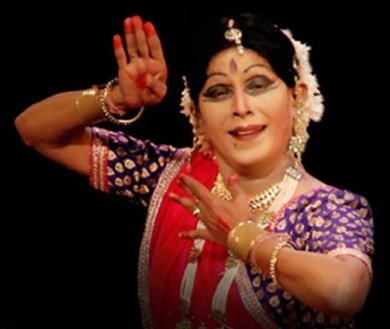 Shovana Narayan The inaugural session featured bureaucrat/dancer Shovana Narayan. Poetically referring to taal and laya as binding the whole of creation, (shristi) of which man is a micro manifestation, the dancer spoke of her entering the Kathak world at a very tender age -growing up in a home atmosphere where art and scholarship had equal emphasis - with her mother an Esraj player and father an art-appreciating civil service officer. Independence, along with the nationalistic fervour, opened up a new chapter of hope and expectation with society undergoing changes. She mentioned the male dominated Kathak arena beginning to attract female aspirants too. Actually what Shovana connected with Independence had begun much earlier, even before she was born. Surprisingly, barring Dr. Nandkishore Kapote, nobody mentioned the fact that as early as the 1920s, when the likes of a Bachwajan still reigned supreme in Kolkata, a lady from a Brahman family, Menaka, nee Leila had started learning Kathak from Guru Sitaram Prasad, and later from Achhan Maharaj for a while and then Lachhu Maharaj. Damayanti Joshi, her disciple, has written about Menaka's school in Kandla. Touring Europe with a troupe, performing in the premiere of Municipal theatre in Greece, Menaka's Indian Ballet (Menaka's compositions used Kathak with other Indian classical forms) was awarded the first prize! Damayanti Joshi has quoted Arnold Haskell of Dance Times praising the effort saying no concessions had been made for a foreign audience, and reproduced dancer Mary Wigman's response: "This is the dance technique of which I have always dreamed. After seeing it, I feel we Europeans should never dance...This is the first time we have seen something so marvellous." Many westerners observed that it was difficult for others to create an impression, after having witnessed the Indian performance. Shovana Narayan speaking of her first guru Sadhana Bose (sister of Naina Devi), referred to Kathak choreographies of that time built round the poetry of Omar Khayam, of Kabir, of Rumi, as against today's dance compositions inspired by poetry and themes from Indian epics- all sharing the same emotions. Whether it is mother Yashodha or Radha in separation from Krishna, the quality of yearning is common. Characters may change but bhavanas do not. Poetry and literature in all languages express the same sentiments and this oneness has always united India. Urged by Ramachandra Gandhi's query, "Why not Gandhi, when you portray a character like the unseen Rambha?" the dancer had been challenged to choreograph for themes based on personalities from India's political history. Old or new, Kathak can accommodate all themes and today, dancers were taking up for choreography, literary passages from texts from all parts of the country, thus making dance foster the feel of oneness in the country. With present shrinking attention spans, along with advancing technology, the dancer wondered where one drew the line. It is like the open endedness of Kathak - which can be a boon or a curse - a choice or a challenge. 'Bandhan me mukti, Mukti me bhi Bandhan'. She evocatively brought out the quality of art as a metaphor. Going into her research in dance, Shovana mentioned how during her Kathak search in villages, this 'Bihar ki Beti'as she called herself, came across 22 villages - (19 in U.P. and 3 in Bihar). More importantly, in Bodh Gaya, she came upon a Mauryan statue, three dimensional, with the Prakrit lines engraved underneath (about which the dancer mentioned consulting epigraphists too) underlining the 'Gangeya Nadiya' region where Kathaks entertained. The draped costume, she found very similar to what is worn today. The question lies in how one interprets the word 'Kathak' and 'Kathakars.' That narrative traditions have been a part of India is known - and Shovana concludes that villages where 'Kathaks' lived and practised a tradition,with the body stance as seen in sculpture of that period resembling Kathak of today - establishes the antiquity of this dance. 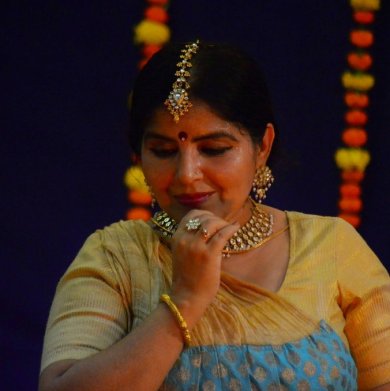 Chetana Jyotishi Beohar Somewhat different in her conclusions, after years of research on Kathak, scholar/dancer, Chetana Jyotishi Beohar felt that 'Kathak' mentioned in the Mahabharat (which people invariably quote as proof of the antiquity of the dance tradition) does not specifically suggest dance, and from all her years of deep research into various texts, the earliest mention of Kathak as 'vinod nritya' as we understand today, occurs in Manasollasa (also called Abhilashitartha Chintamani) a 12th century Sanskrit text on many subjects including dance and music, authored by a Kalyani Chalukyan King Someswara III. Interesting that two views expressed different interpretations - which is the challenge of research! Scholars have looked at Kathak of today as an amalgam of features coming from different diasporic groups settled in India. Kathak patronage extending from a Wajid Ali Shah to a Raja Chakradhar Singh, practised by kings and paupers alike, remains the only Indian dance form,with the natural erect body sans plie as the central stylistic concern - a feature attributed to the syncretic culture of the Doab - 'Ganga Jamuni tehzeeb'. One must acknowledge that in Post Independent India, Kathak, situated in the capital, with audiences hailing from a large Hindi speaking population in the country functioning under the direct gaze of the government, with an institution like the Kathak Kendra funded entirely by the government, has enjoyed more advantages than other classical dance forms, which have largely existed on state patronage in their respective regions of birth. Even other SNA institutions for Sattriya and Manipuri started much later. Nothing if not modest, Chetana Jyotishi Beohar (whose training was in the Raigarh school of Kathak under late Guru Kalyandas Mahant and Ramlal ji) made light of her educational qualifications. Referring to her research and M.A degrees with distinction in Kairagarh University working under Guru P.D. Asirvadam and Prof Mandavi Singh, she spoke of the former teaching her, not just the benefits of 'aghorriyaz' but also the realisation that ego has no place in art. She is extremely thankful to scholar Premlatha Sharma with whom she had the good fortune of working for 22-25 years, and also her interactions with Nataraja Ramakrishna the Telugu dancer/scholar, and not least, the constant backing provided by her late father - all giving her the 'drishti' and the aesthetic eye for the art form of dance. 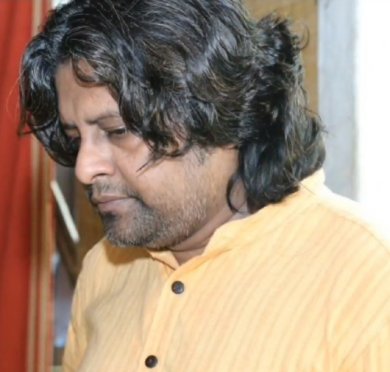 Piyal Bhattacharya This critic enjoyed the lec/dem by Piyal Bhattacharya whose research into the Natya Sastra, has little to do with Kathak per se. But his talk underlined some significant aspects that individual interviews and performances did not always manage to bring out. Piyal's talk quoting references from the Natya Sastra proved that in the Natyadharmi technique, wherein the dance is 'alaukik', the transcendental nature of the art being far from realism, conceives the performer as 'Ekaharya'- who through highly stylised technique takes on several characters - the gender of the performer being totally irrelevant, for the male could be female and female male, according to what was being portrayed. Which also explains why mythical characters like Rama and Krishna become the thematic concerns. 'Stree Vesham' does not mean an imitation of real life woman. This 'fifth Veda' was meant for all - irrespective of caste or creed -'Saarvavarikam'. Totally secular, dance chisels space with form - its yogic intensity, evolving from the outer gross body to the sookshma (subtle) body with its inner spaces - culminating in a transcendental experience in which both performer and audience are involved. Inclusivity is in the very nature of such art. Today's concern with nationalism, he said, presupposed boundaries and colonisers. The idea of Nation prevailing today had little relevance when the Natya Sastra was compiled. Time and space keep changing with history and with human psychology the wrappings of art change. However the Anadi Parampara mentioned in the Natya Sastra guides the whole of humanity. It involves prana, vak, anga and shareera - eternal concerns applying to all of humanity. Spirituality one refers to is connected with consciousness, energy, mind, motion and matter - all universal concerns. What the artist presents, was referred by the scholar as one's own 'intellectual property'.  Rashmi Vajpeyi Rashmi Vajpeyi, who was Dean of Khairagarh University and is herself a Lucknow gharana dancer, referred to the British rule, where India as the 'Sone Ki Chidiya' was for the colonisers, the golden bird and they were least concerned about our art forms - dance being looked down upon. It was the small Indian royal principalities which provided some succour for practitioners, like Rampur and Raigarh. She touched on Raigarh gurus Kartik Ram with his excellence nd Kalyan Das who trained under Achhan Maharaj and revealed sensitive abhinaya skills. She also mentioned the present drawbacks of 'khulla naach' becoming a pre-set presentation masquerading as improvisatory ability. Recorded music and ensemble dancing she maintained, had diluted both musical ability and the solo strength. When directors like late Keshav Kothari heading the Kathak Kendra, gave impetus to new themes, with even Sumitra Charatram's early efforts at institutionalising Kathak dealing with early productions like Malti Madhav with young Kumudini Lakhia as Malti and a younger Birju Maharaj as Makaranda, the textual emphasis was still on Indian poetry. Art can give us greater insight and ability to think in new ways, and provide a sense of unity provided it is used the proper way to focus on issues of a democratic world. Any teacher today becomes a guru. She wondered what the net value of four years spent in the Kathak Kendra was. What do these degrees mean? Where is the Sastra for Kathak? The only really incisive writing on Kathak was Dr. S.K. Saxena's books. 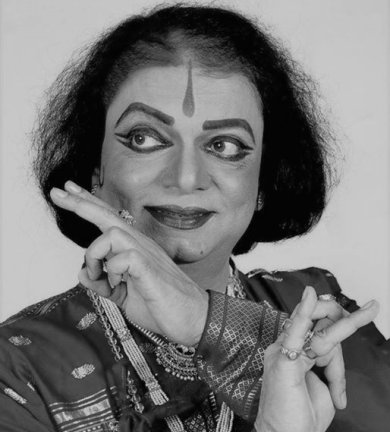 Dr. Nandkishore Kapote Dr.Nandkishore Kapote who shared the stage with Rashmi Vajpeyi, spoke minimally. Briefly mentioning Menaka's school and days of Damayanti Joshi and Roshan Kumari, he referred to the very significant landmark of Nirmala Joshi's efforts at starting the school for Hindustani Music and Dance in Delhi and democracy ushering in new audiences with films like 'Jhanak Jhanak Payal Baje' by Shantaram Rajaram Vankudre, where Gopi Krishna's dance bewitched viewers. He mentioned how when Guru Munnalal Shukla and others were teaching in Maharashtra in 'Ghungroo' on Prabhat Road, he had first met Birju Maharaj, whose mastery had totally ensnared him. Here was a man who with little rhymes about "Kela, kakri, santara" could create tihais and tukras for kids, making a "tat, tat ta, thaita" learning such pleasure for the youngsters. 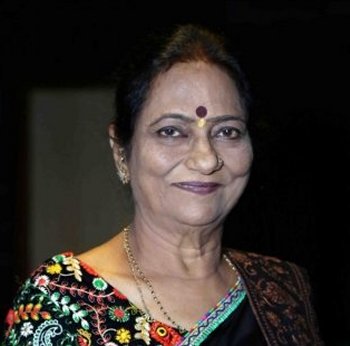 Shobha Koser Shobha Koser whose Kathak institution Pracheen Kala Kendra in Chandigarh attracts many aspirants, spoke of her efforts in creating in Punjab a really appreciative audience for Kathak when the State was very dry in terms of dance activity.Today's abiding respect for the 'Guru' and recognition of sangeet/nritya culture with the Kendra's open university awarding over 3 lakh students with degrees and P.H.D's, was high acknowledgement of culture as an important part of life and education. Where she and her small group would wait endlessly at the gate to receive a Sitara Devi or Bhimsen Joshi, today, there was no place to sit in the auditorium when eminent artists performed. Instead of the original lack of concern, today's media published reports of programmes forthwith. She thanked institutions like the Guru Nanak University and other such bodies for aiding efforts in this Yatra. Her demonstration comprised 'vande mataram', and 'shabdo me bhav' which was her own creation and a thumri based on the month of Saavan. 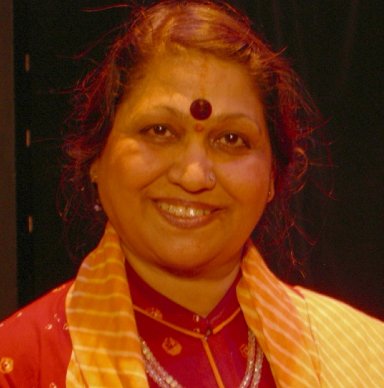 Urmila Nagar The embodiment of classicism at its zenith, and vintage Jaipur gharana, Urmila Nagar for this critic, represents Kathak in its holistic avatar - her grasp on 'Sanskriti' with brief and involved chanting in praise of Ganesh, Saraswati and the Rudrashtakam - along with excellent parhant, not omitting her equal musical proficiency in rendering a Thumri or a ghazal, or a Rajasthani Bhajan "Taje kani kane samjhave"- all in keeping with her dance expertise.This fine artist forms part of the miniscule representation today, showing equal prowess in all aspects of the dance. Speaking of her first Guru Gopalji of Jodhpur from where the Kathak 'biradari' hailed, she mentioned the speciality of their parhant with 'bold' bols like "Ta tho taranga….." and how it was instilled into her, from the very start, that dance without knowing sangeet would lack that special melody which even a ghungroo sound should evoke. When in Kathak Kendra under the teaching of Guru Kundan Lal Gangani, she had made it a point to enter and watch classes of Guru Sunderprasadji, of Sidhheshwari Devi teaching Thumri singing, of Vinaychandra Maudgalya who took classes in music, of tabla classes under the best of gurus. "Lehra, Peshkar, Kaida", 64 matra taal and how to compose lehras (musical refrains) which brought out the taal accenting and not just the matras were all part of her training. Workshops were held on just the topic of lehra. She also mentioned that Pt Birju Maharaj's classroom was the only one within closed doors. She even had Urdu lessons under Hafeez Ali Khan Saheb's daughter and made it a point to regularly listen to 'Vrij Madhuri' and thumri programs on AIR. The Kathak Kendra of today had shrunk. One needed to understand the togetherness of sangit and sangat. With Independence, the cry for newness and choreography is fine, but she did not want the khullapan ki atma, the soul of Kathak, to be destroyed with fixed sawaal/jawaab. Sahitya was equally important and one had to know how to use words in a Thumri or a Dadra, and how the body needs to respond to each bol of the parhant.  Arshiya Sethi The relevance of discussing Kathak after Independence was best brought out by scholar/ writer Arshiya Sethi. Coming from the Punjab, where people were generally indifferent to dance, she inherited the bug from her mother, who as early as 1954, had learnt from a teacher from Uday Shankar's school. She had lessons under Kanhaiyalal who came home to teach. She was drawn towards arts management and though the initial desire for a PHD under B.N Goswami did not materialise, her abiding interest in the interrelatedness of Arts did extend to some lectures. Getting engaged in television and national programmes provided her some fresh insights into the art of the masters. Making the assertion that Kathak had always been independent with its open ended 'khulla naach' approach, she gave examples of Mohan Rao Kalyanpurkar presenting a theme like 'War and Peace' in Kathak and of Rohini Bhate who in 1953 in her Krishna koina had touched on the subject of river tributaries, erection of dams and raising of crop production. Another production, she remembered, was Jhelum ki aasu. Years back under the Kathak Kendra, Birju Maharaj had produced works like 'Loha', based on a piece of iron which struck her by the choreography and also the philosophy behind the work. She mentioned yet another wonderful work by Maharaji, on what happens to a film on the editing table with movements forwards and backwards, and several such choreographies - showing how the classical form with its grammar had been utilised for themes of relevance to contemporary life. She explained how the Kri Foundation, her organisation, had sponsored dancer Rani Khanam in Black and White - raising the issue of treatment of women, of minorities and their freedoms connecting with dharma and law. That was the time that Nirbhaya had shaken society. Some of the segments of the dance were performed with dancers wearing burkha. Kri had taken dance even to jails for the benefit of prisoners having exposure to good educational programmes through dance. Child labour, drug prevention schemes can all be shown in Kathak and the government can make use of this art form for educating society. Unfortunately, most of the Kathak dancers today preferred living in their comfort zones, by restricting themselves to imitating what the guru had given them. While a staunch ally of the Guru/shishya institution herself, she believed that Arts had to reach out to the audience and mirror society in its content. Every dancer needed to read poetry. Unfortunately dancers today are not all avid readers. Years ago, Arshiya recollected, how Uma Sharma's Kathak had drawn thunderous applause from a standing audience presenting navaras to the line "Shamma har rang me jalti hai". Only when you leave grammar (which does not mean destroying the identity) can art start. The swa in swar means self and dance was a pathway for developing ideas.The fear factor needs to be removed, and while venerating the Guru for giving one the knowhow, it was important to remember the words of Begum Akhtar to her student Rita Ganguly - 'Do not copy me.' Arshiya stressed the need to maximise one's capacity and become a source of hope for artists who have suffered, some to the extent of going hungry during this pandemic. The development of India included the formation of the Art Akademis, followed by the Zonal Cultural Centres which emphasised the unity in diversity. Arshiya maintained that the torchbearers of our dance forms, the devadasis, tawaifs, sanis being minoritized, had weakened our arts. Government institutions of dance should have the right type of guidance, without choices being dictated by political considerations. Strengths and weaknesses of the media, unethical scholarship, indifferent and poor critiquing had all added to the inadequacies of the present. Arshiya, working as Creative Head for Programmes at the Habitat World from 1994- 1997, and a two time recipient of the Fulbright Scholarship, has travelled widely. Taking part in the Lincoln Cultural Centre programmes and seeing how audiences are created, she realises that art cannot be based on fixed ideas. Held captive by Arshiya's eloquence with clarity of arguments, the organisers prolonged her session - forgetting the fact that a very senior artiste Roshan Datye was being kept waiting much beyond the specified time for her programme.  Nalini - Kamalini Described as "not just 1 in 2 but 2 in one' by the director Kathak Kendra, Nalini - Kamalini (Kamalini having just completed her term as the last Director of the Kathak Kendra, Delhi), have always been regarded as an inseparable twosome in dance and life. Nalini, a school champion in sports and a science student engaged in studying for engineering, said that the questioning nature of science and the bodily involvement in sports had both contributed their fragrances aiding the Kathak journey. Full of eulogies for their Guru Jitendra Maharaj (this guru adulation a much articulated feature amongst all Kathak dancers) who had guided them in this ocean of art, she spoke of the days without mobile phones, when tickets for shows were purchased even in Sapru House. The duo reminisced on various points of their career - the dance Parampara in Mathura, of performing in temples like the Banke Bihari Mandir in 1997, of dancing in Patna with Shantaprasad on the tabla with Patna ke keherwa and Farmaish compositions, of how reception committees at railway stations on Vasant Panchami greeted them, with enthusiasts ready with tilak, mala, aarti, nariyal, of performing in Kashmir and of their trips to Pashupatinath, to the kingdom of Nepal, to Mansarowar, and to Amsterdam. Nalini's eloquence in composing poetry (which she said had her didi as listener) had some evocative moments when she described Kala as Karna. In this dog eat dog atmosphere of today, where, instead of drinking the mother's milk, one is ready to suck out her blood, who is the one to provide succour to whom? For this critic,the significant part of the interaction was when Kamalini spoke strongly of the lack of government policies for the welfare of artists. Navarasa cannot be presented on an empty stomach. The pandemic and lack of teaching and performing opportunities had resulted in the death of artistes. There was dire need for a forum to decide on the welfare of artists. I hope the government is listening! 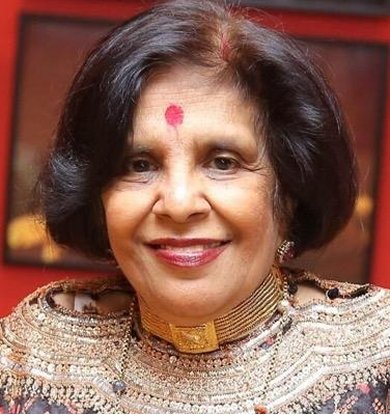 Shobha Deepak Singh Shobha Deepak Singh of Shri Ram Bharatiya Kala Kendra is directly connected with the evolution of Kathak from the 1940's, with her late art activist mother who initiated the Jhankar effort, more or less in tandem with Nirmala Joshi's opening of the School for Hindustani music and dance involving Achhan Maharaj and later young Pt Birju Maharaj. Mrs. Charat Ram's endeavour later grew into the Bharatiya Kala Kendra with Shambhu Maharaj as leading guru and later Sunderprasadji too. One needs to remember that Maya Rao from the South of India was among the first scholarship holders to be trained under late Guru Shambhu Maharaj. After training, she took Kathak to Karnataka while Kumudini Lakhia from the same batch took the dance to Ahmedabad, which in those days did not even have a tabla player, and was a stranger to Kathak. These dual efforts fused into the present Kathak Kendra under the SNA. Shobha Deepak Singh was critical that Kathak gurus who taught so many female students, did not easily allow their own daughters to dance. For her, dance was a 'journey of life' and she spoke for an open atmosphere, with aesthetic sensibilities not being curbed by the 'achha' 'bura' divide. An open question and answer session with Sadhana Srivastava would have been more spontaneous than the written speech Shobha Deepak Singh got tied down to.  Madhavi Mudgal 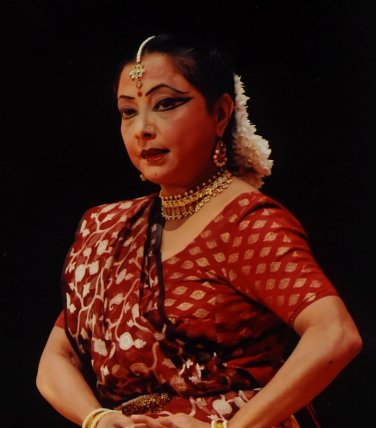 Saswati Sen Madhavi Mudgal, before Odissi ensnared her and became her life's preoccupation, had her entry into dance through Kathak (which few people know) and she was on the way to a promising future in Kathak with her initial training under Narayan Prasad of the Jaipur gharana, who taught at Gandharva Mahavidyalaya, to her reaching a level wherein she performed with Late Pandit Durga Lal in duets. Saswati Sen, seated in the audience at Kathak Kendra, was suddenly issued an invitation midway by the director, to join Madhavi Mudgal on the stage. Both being products shaped by legendary gurus (Pt Birju Maharaj and Kelucharan Mohapatra), Madhavi mentioned how what their gurus created when they were learning, was 'new' in the respective dance fields. In their own cases, what was new had organically emerged out of years of what traditional training had taught them. 'Groupism' was mentioned as striking at the roots of the give and take of the old days. Youngsters of today, while as hard working are in a hurry, burdened with a windmill of activities, where the constant compulsion of having to be 'new' makes them produce immature compositions. What is new has to emerge naturally and not through force. An important point raised was, "Will you dance according to the times or will time dance to your dance?" As for dance criticism, both scorned half-baked writers with little knowledge and less integrity who were not helping the art situation. 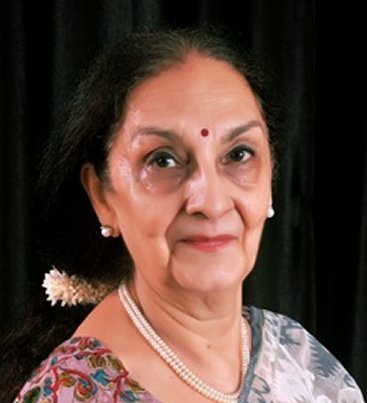 Gitanjali Lal Representing Kathak gharanas, some of the lec/dem sessions were very informative. Mohanrao Kalyanpurkar, the first Director of Kathak Kendra, about whom little is known today (the festival curator learnt under him), found frequent mention in some references. Gitanjali Lal spoke of the days in Bombay, when she travelled by train to reach Nariman point to learn at the NCPA where Mohanrao Kalyanpurkar taught. A great advocate of 'Khulla Naach' he would just prescribe a phrase of bols and ask the students to build on it by weaving improvisations. 'Nazar' is given to all - but 'nazariya' or aesthetic eye is what each student had to develop. Later under Devi Lal, her late husband, and Durga Lal with whom she presented several duets, one never thought of programmes.Those were days with little money, no cell phones, or fridge or tape recorder, with life comprising riyaz and more riyaz - when learning music and the tabla were also part of the training in Kathak. With her student Abhinav Mukherjee also making a short appearance, Gitanjali's session brought out the gharana imprint with grace and efficiency. The other rewarding lec/dem was by Sunil Vaishnav, disciple of Firtu Maharaj of the Raigarh Gharana, with Vasanti Vaishnv and her daughter in the demonstrations bringing out beautifully the specialty of their gharana whether in depicting a Vasakasajja, a Kali Paran, Gat Nikas or gat bhav showing the ghungat wielded in shy slowness by a new bride. The feature one would have loved to see more of was the improvisations built into footwork, which amongst Chakradhar Singh's compositions did not find enough space. 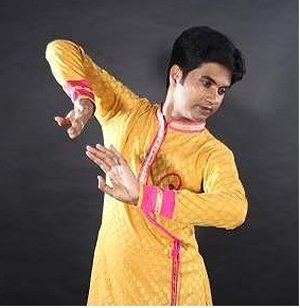 Sandip Mallick A product of cumulative teaching as a long time disciple of Srilekha Mukherjee followed by informative training interludes under Pt Birju Maharaj, Pandit Chitresh Das, Pt Vijay Shanker, Guru Bandana Sen, Bela Arnab and acclaimed artists like Saswati Sen, Ram Mohan Misra, Sandip Mallick's lec/dem, started with the Angikam Bhuvanam hymn, wherein Thaat provided the angikam, with parhant and the ghungroo sounds representing vachikam and gat nikas and bhav becoming the decorative aharyam for the Godhead of Shiva. The entire effort along with two excellently trained students of Sandip , Supradeep Sahu and Shorab, all turned out in impeccably tailored simplicity, was an imaginative mix of how to coalesce the geometry of body movement, the bols, the Sastras and the arithmetic of rhythm - knit and woven into a 'katha vachan' of a different type. The four Nayaka types - Rama as Dhirodaatta (heroic and valarous), Ravana as Dhiroddhata, full of hauteur and ferocity, Krishna as Dhirolalita (sporting and heroic), and Buddha as the peaceful Dhiraprashanta, not to speak of the 3.4.5.7 and 9 arithmetic knit into parans, and Kavits, with competent accompaniment provided by Anirudh Mukherjee on tabla and Sunand Mukherjee on sarod, brought to the fore a performer/teacher of high standard. While the interpretative was brought into play through other ways, the all male troupe had no abhinaya to compositions like the thumri. It was a new experience watching Manjari Deo, one has not seen before. The old world flavour of her dance bringing out the nazar andaz of her guru Gopi Krishna's style, the vilambit Thaat and Kavit were very graceful. Among disciples of Rohini Bhate, who learnt a lot from Mohanrao Kalyanpurkar, Manjari Kiran who, on what was the birthday of Mohanrao Kalyanpurkar, started off with promise, but somewhere lost herself - her 3,4,6,8,9,12 Shat Palli leaving the tablist and herself at odds. Kali Paran in khandajati, another Kalyanpurkar composition learnt from Rohini Bhate needed more fire. The abhinaya part in her presentation of Rajasthan's "Kesariya Balam" was tame - with the singer Brajesh Misra stealing the thunder with his delightful performance, which included the singing of the Kumar Gandharva Tarana composition in Shree. Heartening that the Kathak Kendra has a singer of such talent on its cadre.  Roshan Datye Rohini Bhate's identity and her training of delving into Sastra and Prayog with equal stress, really came out in the lec/dem by Roshan Datye who with her student brought out the comparisons between what is done in Kathak and what one sees in the Sanchi Stupa with the Shalabhanjika pose on the eastern gate. The variety of elaborations woven round the line "Aawat Shyam lachak chale, mukut dhare" and her own composition of Shoorpanakha as an adhama nayika were brought out - showing again how it is important to be soaked in the traditional vocabulary for new ideas to spurt. 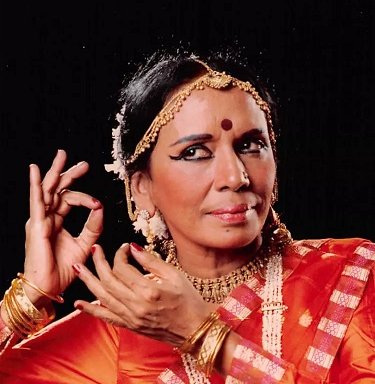 Sunayana Hazarilal Finally watching Sunayana Hazarilal performing in the Janaki Prasad gharana starting with the devotional quietude of "Gaye Ganapati Jagavandana", one realised why the classical in the traditional repertoire, when done in all its intensity,always has the power to enthral - and questions of new and old have no meaning here. At this hoary age, when bodily agility is diminished, Sunaina's minimal footwork in a "na dhin dhin na" upaj, had a musical quality going beyond just technical correctness. As for that Bedam Ladibandh Paran, her own tarana composition in Vrindavani Sarang and the Dadra "Laskar jane na doongi" with innumerable interpretations built round the one line (which one has witnessed countless times), each occasion is equally moving. As for tablist Kalinath Misra, singer Somnath Misra and an excellent sitar player (whose name got swallowed in the internet letting one down for seconds), music of this type is rare in Kathak recitals today. So food for thought - How does one define progress in tradition?  Writing on the dance scene for the last forty years, Leela Venkataraman's incisive comments on performances of all dance forms, participation in dance discussions both in India and abroad, and as a regular contributor to Hindu Friday Review, journals like Sruti and Nartanam, makes her voice respected for its balanced critiquing. She is the author of several books like Indian Classical dance: Tradition in Transition, Classical Dance in India and Indian Classical dance: The Renaissance and Beyond. Post your comments Pl provide your name and email id along with your comment. All appropriate comments posted with name and email id in the blog will also be featured in the site. |